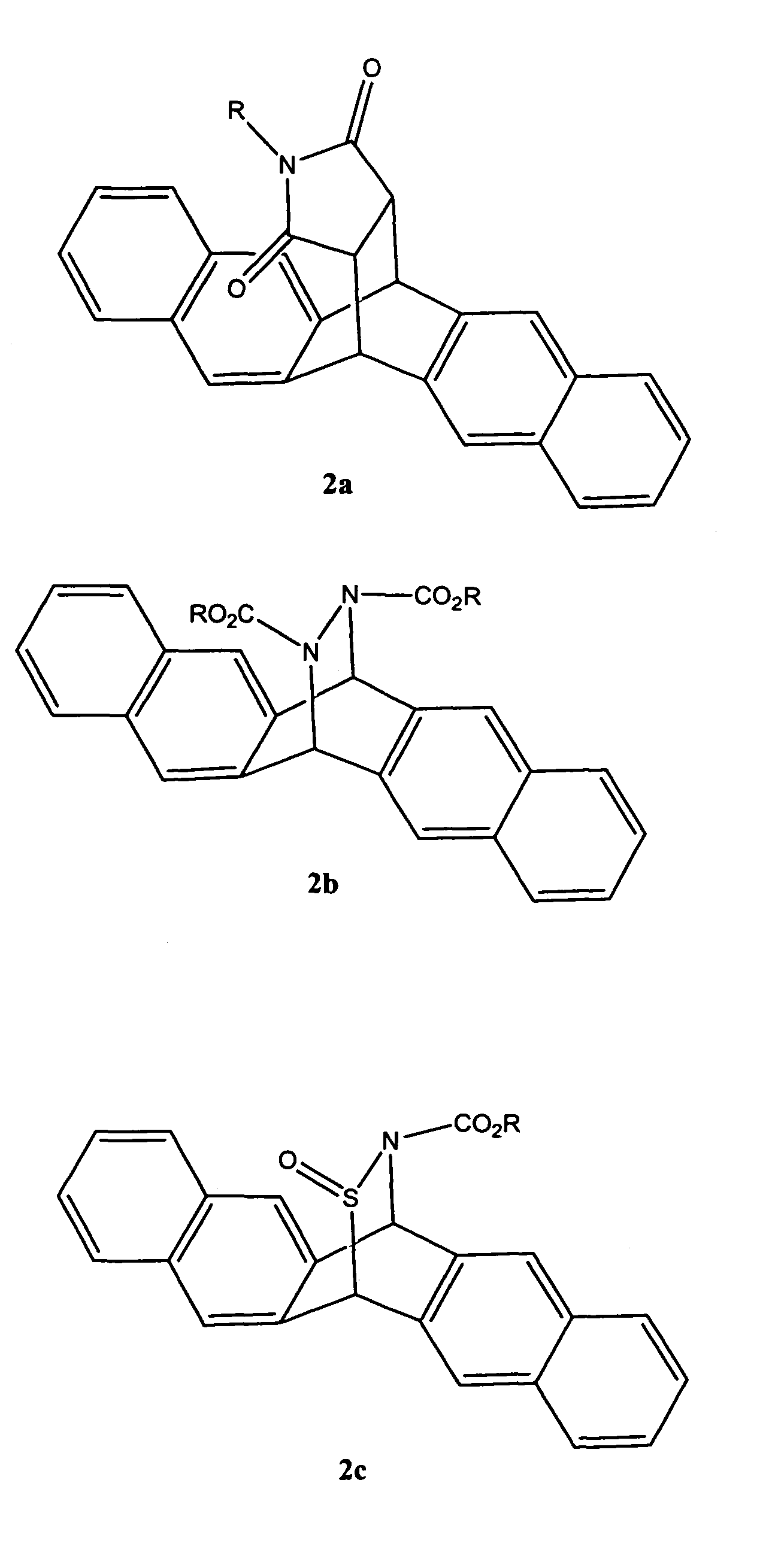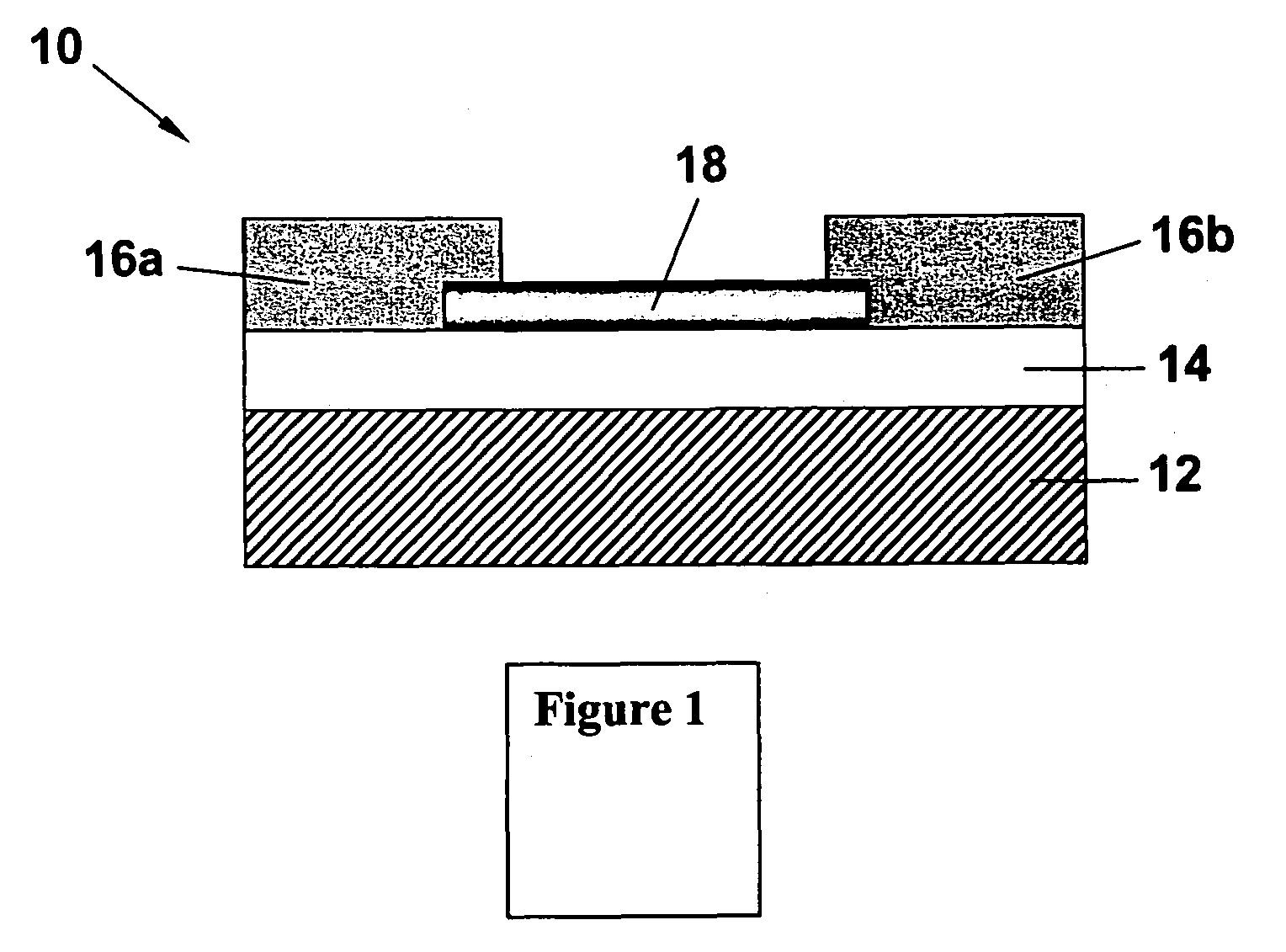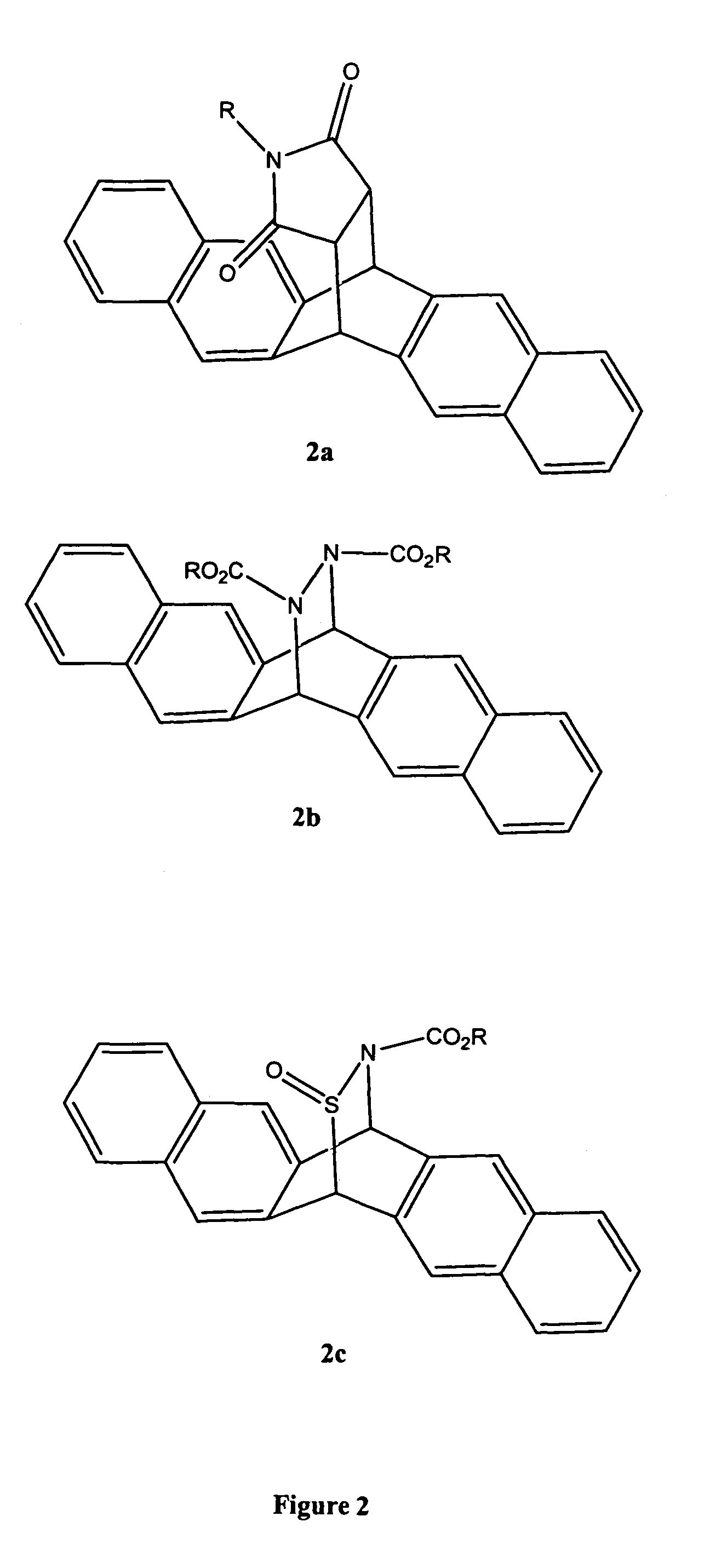Complexes of carbon nanotubes and fullerenes with molecular-clips and use thereof
a carbon nanotube and molecular clip technology, applied in the field of carbon nanotube or fullerene complexes with molecular clips, can solve the problems of cnt devices that show significant scattering of electrical charges, adverse electrical effects that are detrimental to device performance, and heterogeneity in cnt diameters
- Summary
- Abstract
- Description
- Claims
- Application Information
AI Technical Summary
Benefits of technology
Problems solved by technology
Method used
Image
Examples
example 2
[0055]Separation of nanotubes according to size. To a solution of the adduct 5d (60 mg) in 15 mL of chloroform is suspended 2.5 mg of carbon nanotubes and the mixture is sonicated for 90 minutes. After sonication, the mixture is centrifuged for 30 minutes and the dark solution is decanted cautiously from the residue. Raman spectroscopy of the CNTs in the supernatant liquid shows that most of the nanotubes with diameters greater than 1.3 nm are separated and have precipitated out of the solution during centrifuge. See FIG. 10.
example 3
[0056]Adduct 5f: Pentacene-N-alkylmaleimide adduct 5d (500 mg) is added to 5 mL of triethyl phosphate and the solution is heated under nitrogen at 160° C. for 4 hours. The solution is cooled to room temperature and excess triethyl phosphate is evaporated under reduced pressure to give phosphonate 5e which is dissolved in 10 mL of anhydrous dichloromethane and treated with 4 mmole of bromotrimethylsilane under nitrogen. The solution is stirred at room temperature for 4 hours and quenched with methanol and one drop of concentrated hydrochloric acid. The precipitate is removed by filtration and washed several times with methanol and then ether and dried to give phosphonic acid containing adduct 5f.
PUM
| Property | Measurement | Unit |
|---|---|---|
| diameter | aaaaa | aaaaa |
| temperature | aaaaa | aaaaa |
| dihedral angle | aaaaa | aaaaa |
Abstract
Description
Claims
Application Information
 Login to View More
Login to View More - R&D
- Intellectual Property
- Life Sciences
- Materials
- Tech Scout
- Unparalleled Data Quality
- Higher Quality Content
- 60% Fewer Hallucinations
Browse by: Latest US Patents, China's latest patents, Technical Efficacy Thesaurus, Application Domain, Technology Topic, Popular Technical Reports.
© 2025 PatSnap. All rights reserved.Legal|Privacy policy|Modern Slavery Act Transparency Statement|Sitemap|About US| Contact US: help@patsnap.com



